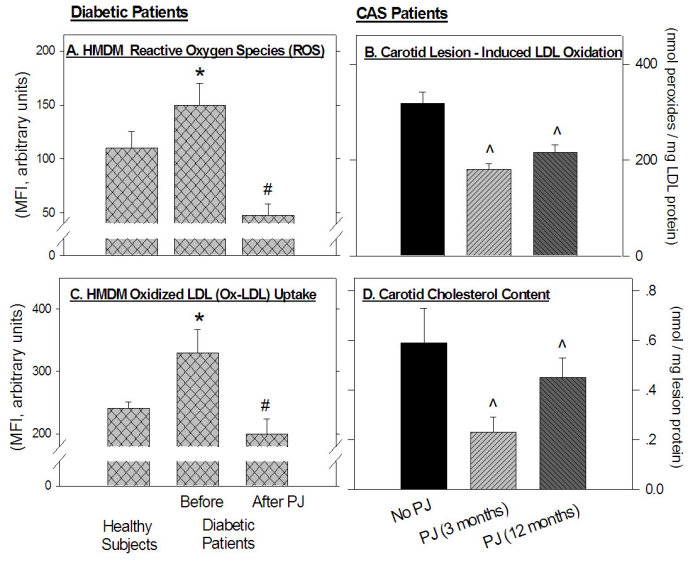
Figure 4.
The anti-atherogenic effects of PJ consumption on HMDM from diabetic patients, and on carotid lesions from patients with CAS.
A and C: Monocytes were isolated from the blood of two healthy subjects and from three patients with type 2 diabetes before and after 3 months of PJ consumption (50mL per day). The monocytes were differentiated into macrophages in the presence of RPMI medium containing 10% autologous serum. After 7 days in culture the amount of ROS (A) and the uptake of Ox-LDL (20μg of protein/mL) labeled with FITC by the cells (C) were determined. Results are given as mean ± SEM.*P<0.01 diabetic patients’ HMDM versus healthy subjects’ HMDM, #P<0.01 diabetic patients’ HMDM after PJ consumption versus diabetic patients’ HMDM before PJ consumption.
B and D: Lesions were collected from seven patients with CAS after endartherectomy and from two patients who consumed PJ for 3 and 12 months and had to undergo endartherectomy during the study, due to clinical deterioration. B: Lesions (0.3 g) were incubated with LDL (100 mg of protein/L) in PBS for 20 hours at 37°C. The extent of LDL oxidation was measured by the lipid peroxide assay. Lesion-mediated oxidation of LDL was calculated by subtracting the values obtained in control LDL (incubation with no lesion) from those obtained after LDL incubation with the lesions. Three determinations were done on each lesion. D: The amount of cholesterol was measured in the lesion homogenates. Results represent mean ± SEM. ^P<0.01 (carotid lesions after PJ consumption versus carotid lesions, no PJ).